Don't wanna be here? Send us removal request.
Text
Arvin Garcia - Scineap Adaptation
BEAUTY AND THE BEAST



What the book, animated film, and the real-life adaption have in common is that they have a similar plot. The curse in the book version happened when he refused to marry an evil fairy which turned him into a beast in the fairytale. The curse from the Disney film is he got cursed because he didn’t bother to help the old lady drenched in rain. I think the change in how the curse happened depended on the audience that’s why they changed it because usually a kid’s idea of a fairy is a friendly small being not an evil one, and it’s a good idea because they focused on their main audience.
2017 film adaptation: Belle is an inventor/engineer. This shows that women can also invent machines and apparatus that could make lives easier. She is also resourceful and a dreamer; she is an empowered woman.
Animated film: Beast could barely read; wealthy, privileged and entitled spoiled prince (makes us realize that money cannot buy manners)
2017 movie adaptation: has read tons of books and excited to share it with Belle
I think they changed
Belle's father (Maurice):
I think his story on how he lost all his riches and became very poor is a story
2017 movie adaptation: Belle's father is not wealthy; he is an inventor
= The character of Belle's father in the book teaches us that we should not take things for granted
Belle's mother:
Animated film: was not mentioned
2017 movie adaptation: The background of Belle's mother was mentioned in the film - where they lived; how her mother died; and how Belle and her father moved to the countryside
Captivity (Maurice):
1. animated film: Maurice intruded the castle and Beast imprisoned him
1. 2017 movie adaptation: Maurice sought refuge in the castle and was on his way out but he tried to steal a rose for Belle (and was caught by Beast)
2. animated film: Belle took Maurice's place in the prison and Beast accepted it
2. 2017 movie adaptation: Belle got Beast to open the cell and made herself locked inside the cell to replace Maurice
2017 movie adaptation: Belle, as an intelligent woman, tried her best to flee from being held captive
relationship:
in the fairy tale the beast is very nice to belle
disney movie: beast saves belle from wolves
One lesson that the story wants to teach children is to love themselves (bui ano to)
2017 adaptation movie: beast becomes nice to Belle
household objects replaced with animals as servants in the castle
2017 movie adaptation: living household objects only; no animal servants in the castle
gaston - good looking but bad on the inside, beast good on the inside, perspectives on people
--will do everything just to marry Belle (both in animated film and movie adaptation) even if it will sacrifice the life of Belle's father
The ending on the animated and real-life adaptations are what we would expect from Disney but the book on the other hand had a different ending which they questioned Belle that she is not
I've read that the book was written to explore issues of women's marital rights because at the time there is an abundance of arranged marriages and according to an article by The Sun UK, many believe that Belle's isolation is a symbol for 18th century women stuck in their marriages.
0 notes
Text
Arvin Garcia - Scineap

In the documentary, the directors mentioned how cheap it is to shoot films in the Philippines. A stuntman was injured and they paid him P5 for participating before going home. A filmmaker mentioned that the Philippines has jungles and girls that you could exploit and you can get them cheap for a film that will cater to a western audience. The cost of labor is very affordable, they have studios and camera equipment, everything they need.
I think exploitation in films in terms of profit is good for the creators because of their focus on what sells on the market partnered with the low budget they use, and I think that’s the only reason why they came here in our country. I remember watching a documentary about a firm related to graphic design where they said that they always get Filipino artists became they speak good English and ask for a cheaper payment compared to other Asian countries, and that video I think is from 2019. Maybe it depends on the person’s perspective if that’s exploitation or not, maybe they desperately need money or not know the “real” value of their service or skill.
The two Filipino exploitation films that I watched were Balahibong Pusa (2001) and Scorpio Nights (1985). I think the two films have a familiar setting that most Filipinos today can relate to, a crowded market with the smell of public transportation and a tenement like area. Violence is also present in both films with the use of a gun and is directly related to a sexual act. Both films also demonstrate the immorality which is present in our country, and to some extent, some people even commend you if you’re a man in a relationship who isn’t a womanizer because to some people that’s the norm. In Balahibong Pusa it happens when Nick is having an affair with Sarah and Becky but some people might look at it as a non-serious relationship. In Scorpio Nights it is the unfaithfulness of the wife of the security guard and her “casual encounters” with Danny.
In this part of the film, you can see two guys staring as Sarah walked by and the first thing I can think of is that they are like lions or predators stalking their prey. You can see the lust in the eyes of the guy on the left. I would say that these types of scenes are considered normal back in the day, but now with different movements that concern women and the respect they deserve and need. Scenes like these might appear offensive for some, but times are changing and they aren’t objectifying women that much today compared to before.

In this particular scene in Balahibong Pusa, we can see that the guy is holding a cue stick and his hand is moving in an upward and downward motion, the cue stick or what we call here locally as “tako” resembles a phallic symbol and the upwards and downwards motion is the representation of penetration, the other guy in his back is trying to hold his shoulders in a groping manner while talking to the other guy about Sarah. I think the usage of phallic symbolism in films helps in the direction of the story, the flow where the director wants the story to go.

This one scene where his neighbor told him something important but Danny didn’t understand it. He said “pag meron kang hiniram na bagay isauli mo agad bago mo maisip na ikaw ang may ari nito”. On the context that he saw Danny crying and being jealous about the marriage of the secuirty guard, and he said that Danny doesn’t have any right to be jealous, and to my understanding that he should stop doing what he’s doing before something bad happens. I think that neighbor who he calls “Henyo” that warned him is his friend, at an earlier scene we can see them talking about the first time Danny tried to “penetrate without consent” the security guard’s wife and Henyo said that there’s no way the the wife didn’t know it was a different guy.

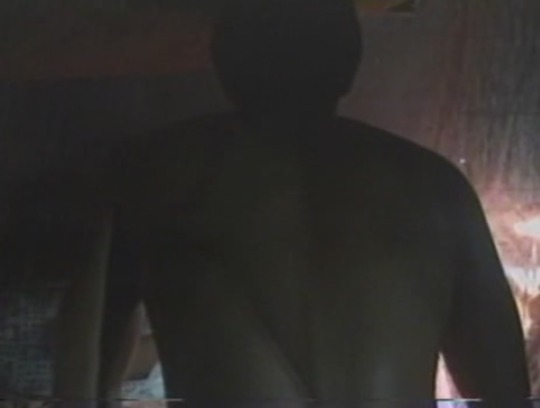
The images below show both men using a gun to take advantage of people to swing the odds in favor of them in a good or bad way. The first image his usage of the is to force the woman to have intercourse with him and the second image the security guard in the film Scorpio Nights caught his neighbor and wife having sex in their room and decided to kill them, and with the sick part where he penetrated his wife until she dies and after orgasm he also killed himself.
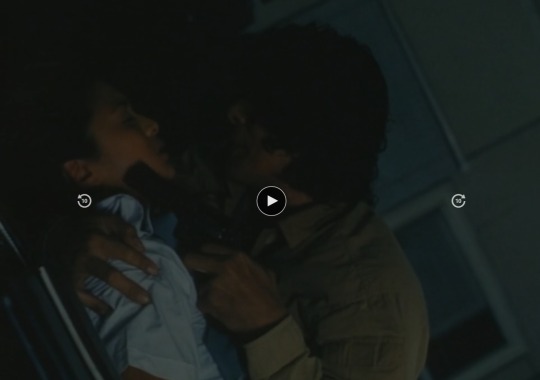
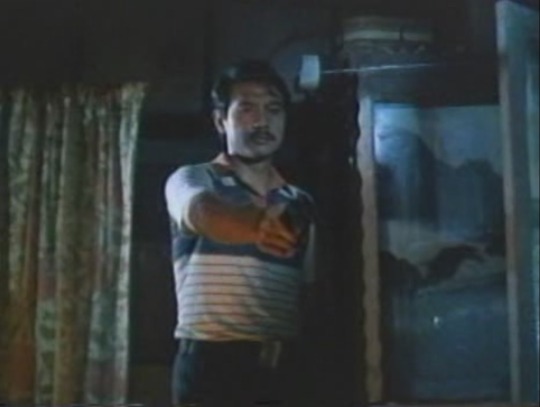
I believe that people resort to the use of power when they don’t get what they want, and if power is available to them like what the gun represents in the images shown below they will use it to turn the tides into their favor. In today’s context though, after all the extrajudicial killings that happened in our country and with the current pandemic that we are facing some people are suggesting in social media that the president should declare martial law. We all know that martial law is related to guns and violence, and it’s really possible to happen given on how our president thinks.
Both films also include peeping scenes like the images shown below. The first image is from Balahibong Pusa where Michael tries to watch Sarah while she’s taking a bath. The second image is from Scorpio Nights where Danny is peeping on her neighbor which is the security guard’s wife, the main difference between the two is that Danny does it several times in the film. I’ve read that voyeurism is a form of sexual perversion that involves peeping or “boso” at other people without them knowing they are being watched whether they are performing a sexual act, nude, or even fully clothed it depends on what you like seeing. Voyeurism or the “peeping tom” disorder is most common on young males, I think this is why Danny keeps doing it in the film.
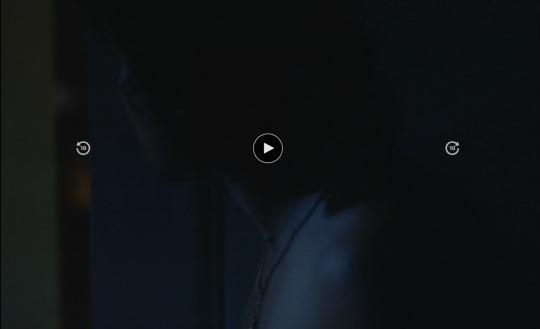
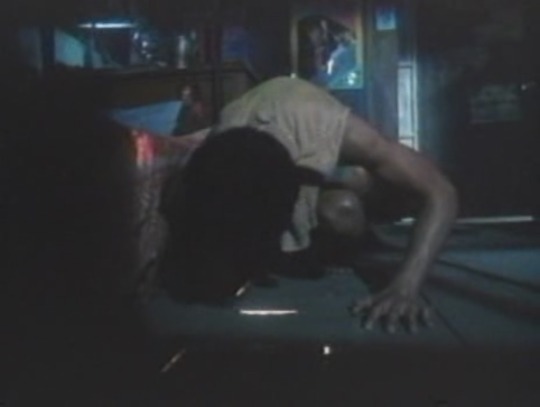
1 note
·
View note
Text
Arvin Garcia - Batch 81 Scineap
IDEAS THAT CAME TO MIND

father and son
Although it might not be directly connected to the film, I just want to share that my father is a part of a fraternity. I am pretty familiar with the initiation because he told stories about it and how paddles turned his legs violet back when I was in high school and his only wish is that I promise him that I won’t join a fraternity when I go to college. As a note my father values integrity a lot, although at times he gets carried away by his emotions, and he is hard to argue with because he hardly accepts defeat and is very irate. He is often angry but not violent. He was a drug addict before I was born and he stopped when I was in high school. He is working until now but before he only stayed at home doing nothing. I got exposed to vulgar words at a young age because of him, and my friends always tell me that I often use explicit words or being “palamura” although I only use them as an expression because I always hear those growing up. Same as smoking, I always see my parents smoking growing up and that influenced me later on but eventually we all stopped smoking. I would define my father as an example of a frat boy, he has the unnecessary hate and usage of the word “bakla” and has the “maangas” vibe to him. A lot of his “brods” back then are my ninongs now, and they’re pretty nice people that just have a lot of stories back then and fatherhood changed them for the better.

RELEVANCE ON TODAY’S CONTEXT
The idea of parents choosing what course you take in college or they have at least a big influence on what you take, I think this still happens now but not as abundant as before. I stopped attending college for a couple of years so my experience might be different for younger folks. I took three entrance exams before for nursing because my parents wanted me to be a nurse and they said it earns a lot, but I wanted to be a painter. I would compare the ideology of being a member of a frat before to an organization now because of the benefits in my opinion, and I think the older generation are more inclined to join fraternities because they have limited options and resources before compared to the generation now. Probably the feeling of belongingness is the same, you want to be a part of something so you can be identified as one of them or a part of them. Peer pressure is also included here, where they try to convince a friend to stay and drink or to do something that the majority of the group wants to do, this is still practiced today and its relation with the feeling of belonging in a group. Different views of people are present in the film as well, one part of the group and one not part of the group. They have different perspectives and have biases on the side that they believe in.
0 notes